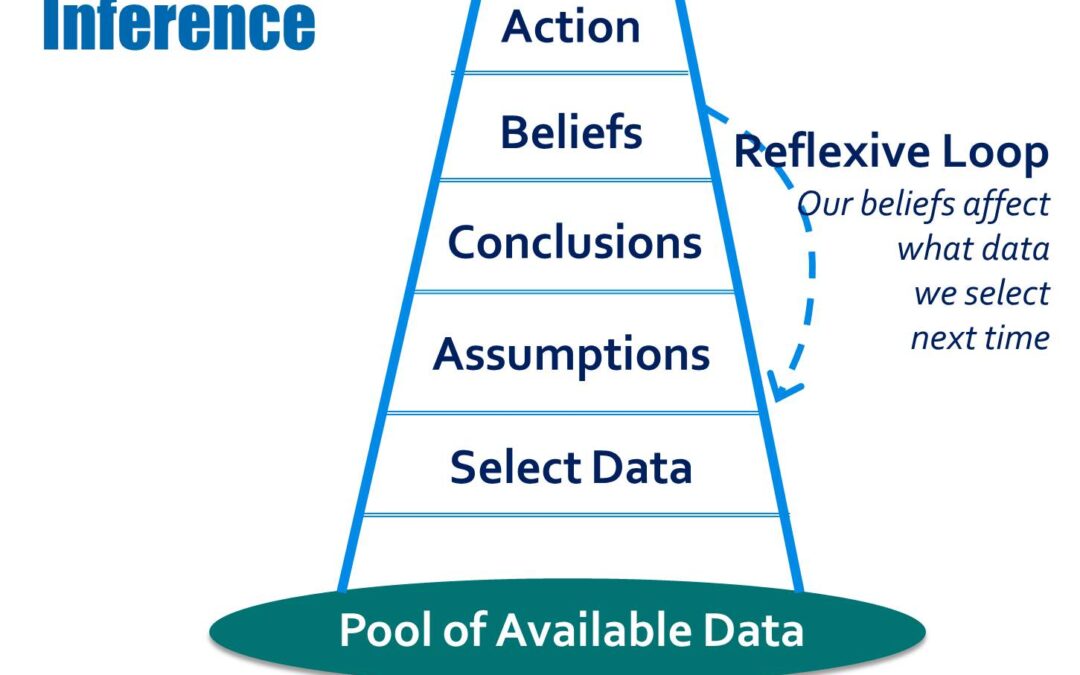“I’m just being realistic,” said the VP of marketing and sales.
“Not really,” I said. He looked confused. “What I mean is, there may be more to the situation than you currently realize.” I went on to explain that when we’re stressed out, worried or angry, like he was, many of us fall back to the stage of Polarization.
The VP and I were doing his IDI® Debrief, “Polarization” is one of five stages of development on the continuum of Cultural Intelligence (IDI stands for Intercultural Development Inventory®), and we were talking about where he was on the continuum in that difficult moment.
The IDI reveals that participants are in one of five stages of development on the continuum of Cultural Intelligence. The stages are: Denial, Polarization, Minimization, Acceptance and Adaptation.(1) He (let’s call him “George”) and his colleagues had taken the IDI because they wanted to know their individual and organization’s ability to engage people with different backgrounds in conversation.
Polarization defined
People and groups in Polarization tend to be overly critical of themselves and others; they think and work from an “us versus them” viewpoint. This binary mindset sees things as good/bad, right/wrong and black/white. I explained that “if we’re thinking things are black and white, that’s not reality. There’s typically more to the story that has not yet been realized or considered.”
The No. 1 growth opportunity for the mindset of Polarization is learning to see the gray areas in people and situations. I said, “If you think about it, none of us is actually good or bad. We’re all a mix, a bit Jekyll and a bit Hyde.” George agreed. When things are seen from a binary mindset, the takeaway tends to be a harsh judgment rather than reality. However, when we slow down and get more information, we are getting more of the truth and able to develop a shared understanding with another. It’s then that we get a fuller and bigger picture. With greater understanding, our gaze softens, compassion grows and we see opportunities for innovation we hadn’t seen before.
An example
I asked George if he could give me an example of where he was feeling things were pretty bleak, with no opportunity. He gave me an example that I paraphrased for him, “It sounds like you don’t want to hire someone away from a good job because you don’t want to put them in a precarious position in your start up. Did I get that right?” He said, “Yes.” “So,” I went on, “if I look for that gray area, let’s call it a dove gray, let me wonder aloud with you: Does your scenario assume everyone is happy in their job or wouldn’t be interested in possibly joining an intriguing effort to launch a new brand?”
He said, “Yes, I hadn’t thought about those possibilities. I see what you mean, I had already made decisions for people I haven’t even met yet.”
I said, “The truth is, reality isn’t harsh.” So I asked George, “As you think about your professional goals, what do you need to do professionally to move out of the polarization mindset so that you can get a broader perspective — so you can practice seeing that softer gray area?” He wasn’t sure. So I asked him, “Where’s your happy place at work?”
“In my 30-year career in sales,” he said, “because of the pandemic, I’ve never spent this much time at home. What I really enjoy is being at a customer [‘s workplace], observing and perceiving needs and translating that into actionable steps.”
I asked, “What’s keeping you from traveling (observing public health restrictions, of course)? Is your boss against it?” He said, “No, I just hadn’t thought about it.” I asked, “What’s your ideal? How many customers would you like to visit this month?” He said, “ideally two.” “Can that be your goal?” I asked, “that you’d like to develop a broader perspective and do more of what you love at work?” He agreed.
“So to make that goal measurable and doable, you’ll know you’ve made progress when you reach out to two clients and make appointments to see them and clear your calendar for those trips this month,” I suggested.
I recommended that he keep record on a spreadsheet of the progress with the client, including the part about how he’s getting broader perspective in communicating with them. He thought that was a good idea.
To wrap up the meeting, I asked him, “What word would you use to describe how you’re feeling right now – now that we’ve done this work?” He said, “Better. No, actually the word is, ‘lighter.’ I feel like I’ve put down a weight.”
To experience greater productivity and engagement at work, we need to discover that softer gray area, get that greater perspective and grow compassion for ourselves. Compassion begins within us. Cultural intelligence is the ability to appreciate ourselves as well as others and adapt our behavior to show genuine respect. It is difficult to feel and show respect for others when we haven’t discovered our own humanity first.
Our first step is to become aware of how we may inadvertently be judging ourselves. This three-day challenge can empower you to notice, observe and recognize the impact of Polarization on yourself and others. Using our head, heart and hands, we can develop the self-awareness that allows us to experience more of our own and others’ humanity, as well as increasing engagement, collaboration and innovation for the organization.
Three-day Challenge
Over the next three days we are noticing, observing and experiencing the impact of Polarization.
- HEAD: Observe what words and actions correlate with the stage of Polarization.
- Under what circumstances do you judge yourself?
- Who in your family, community or office gets alienated?
- What is said or done that alienates?
- How did this observation make you look at people differently?
- HEART: Today as you observe yourself and others, notice your own feelings and the reactions of others when you or they use polarizing language.
- What feelings did you observe in others and how did it make you feel?
- What was particularly heartbreaking or moving about polarization?
- HANDS: Now that you have reflected on the polarization and its impact on you and others, what actions can you take to make sure people you encounter feel valued and heard?
- What thoughts, words and actions can you use to show genuine respect for yourself (the Acceptance and Adaptation stages of the IDI)?
- What thoughts, words and actions can you use to show genuine respect for others (Acceptance and Adaptation)?
- What polarizing processes or systems can be challenged at home, in your community or at your office?
- How could you learn more about the impact of systems that inadvertently sideline or silence groups of people? –Amy S. Narishkin, PhD
References:
- Hammer, M. (2016) Intercultural Development Inventory Resource Guide. Olney, MD: IDI, LLC.
- Image credit: @Angel Balashev, https://unsplash.com/photos/Ae5OJ5L-QI4
Who do you know in your network that would find this blog helpful? Please share this blog with them.










